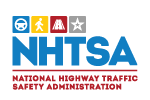Testimony: House Energy and Commerce Subcommittee on Commerce, Manufacturing and Trade
Administrator, National Highway Traffic Safety Administration
U.S. Department of Transportation
Before the House Energy and Commerce
Subcommittee on Commerce, Manufacturing and Trade
Thursday, April 14, 2016
Prepared Oral Statement
[Chairman Upton,] Chairman Burgess, Ranking Member Schakowsky, and members of the committee, thank you for the opportunity to update you on the National Highway Traffic Safety Administration’s efforts to save lives, prevent crashes, and reduce the economic toll of fatalities and injuries on our roads.
The last year was one of the most eventful in NHTSA’s five-decade history, and this year promises to be just as significant.
In road safety, we face a large and tragically growing challenge. We lost 32,675 lives on American roadways in 2014, and our early estimates show that traffic fatalities appear to have grown by up to 9 percent in 2015. I believe that the only acceptable goal is zero traffic deaths. Every American should be able to drive, ride or walk to their destination safely, every time. That is the goal that drives our work.
Earlier this year, Secretary Foxx announced the President’s proposed $1.2 billion budget for NHTSA that includes important investments in NHTSA’s behavioral safety efforts and for accelerating safety technologies such as vehicle automation. This funding will further support our efforts to build on the progress we have made in revamping our defects investigations program. I strongly urge your support for the President’s budget proposal.
I will begin with a topic that receives far less public attention than it is due: Human behavior on the roads. A human choice or error is responsible for 94 percent of all crashes. Through decades of success, we know there are highly effective methods to combat these unsafe behaviors. But we also know that simply doing more of the same will not get the job done. In a series of one-day traffic safety summits across the country this year, we challenged stakeholders to develop new ideas and innovative approaches to make our roads safer. Those efforts will continue as we develop short- and long-term strategies to eliminate traffic fatalities.
NHTSA is also continuing to act on multiple fronts to raise the level of safety in the vehicles on our roads.
Through regulation, NHTSA has issued a final rule requiring electronic stability control on heavy vehicles, and proposed rules to protect consumers from unsafe novelty motorcycle helmets and to upgrade rear impact guards on trucks and trailers. We are also working on a rule to require the installation of speed limiters on heavy vehicles and a rule on vehicle-to-vehicle communications, a technology that could prevent tens of thousands of crashes every year.
NHTSA is also leading on vehicle safety beyond the regulatory process. Last month, we joined auto manufacturers to announce a historic commitment to put automatic emergency braking in more than 99 percent of all new cars by 2022. This agreement will make this technology standard three years faster than if the agency had tried to achieve the same goal only through the regulatory process, preventing thousands of crashes and saving lives.
Our proposed update to the 5-Star Safety Ratings program will put more information about vehicle safety in the hands of car buyers. The updates add tougher crash tests, will for the first time rate vehicles on crash avoidance, and will rate vehicles on how well they prevent and mitigate the harm of pedestrian impacts.
NHTSA is leaning forward on autonomous vehicle technology. This year, we will offer manufacturers operational deployment guidance that outlines how autonomous vehicles should perform on the roads; we will work with partners to provide model state policy; and we will identify new tools and authorities that NHTSA may need so that we can be sure we meet our goal of encouraging safe innovation.
While we look to the future, we must also maintain our focus on safety today. In 2015, NHTSA initiated a record-setting nearly 900 recall campaigns, and we also imposed record-setting penalties.
NHTSA has launched an unprecedented effort to coordinate and accelerate the Takata recalls, currently totaling 28.8 million air bag inflators. Our Coordinated Remedy Program issued to Takata and the affected automakers accelerated the recall remedy process by two years or more. This is perhaps the most aggressive use of the agency’s enforcement authority in its history.
While identifying defects and recalling vehicles is an important safety mission, we would prefer to avoid the problems in the first place. In January, Secretary Foxx announced a historic agreement with 18 auto manufacturers on a series of concrete commitments to safety, including targeting 100 percent remedy completion rates. This agreement could change the safety conversation from reactive to proactive, helping us catch issues sooner or prevent them from happening at all.
We were recently tragically reminded just how urgent this work is. Two weeks ago today, a 17-year-old driver lost her life after the Takata air bag inflator in her car ruptured after a crash near Houston. The local sheriff said that if it weren’t for the rupture, she would have been able to walk away from the crash. The inflator in her vehicle had been recalled, but the repair had not yet been completed. We all play a role in making sure another tragedy like this does not happen again.
You are going to hear NHTSA talk a lot in the year to come about proactive safety, about the need for all of us with a role in protecting the public to make safety our highest priority. Doing so will require new ways of thinking for NHTSA, for automakers and suppliers, for dealers, for safety advocates and for the public.
I appreciate the opportunity to testify, and I am pleased to answer your questions.
